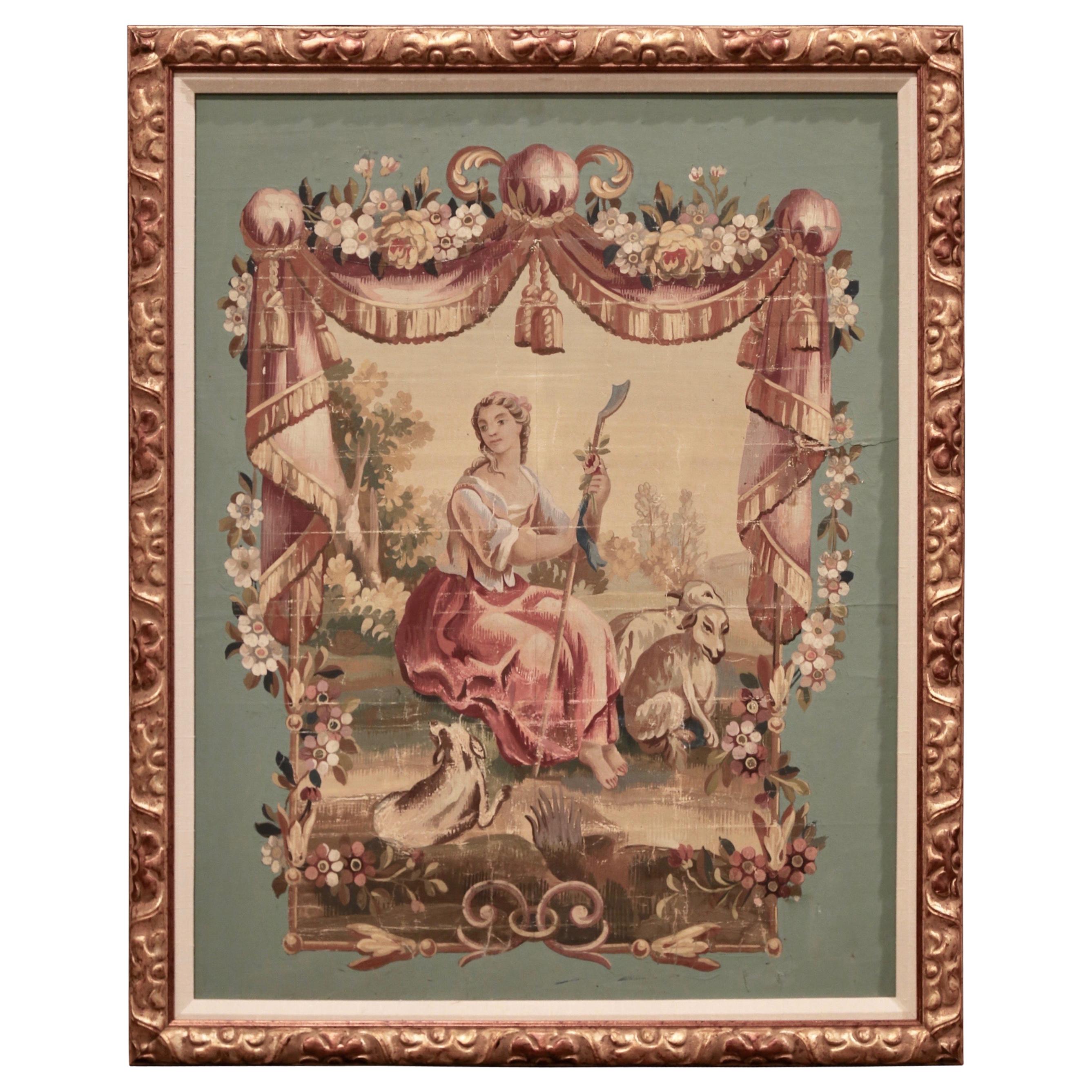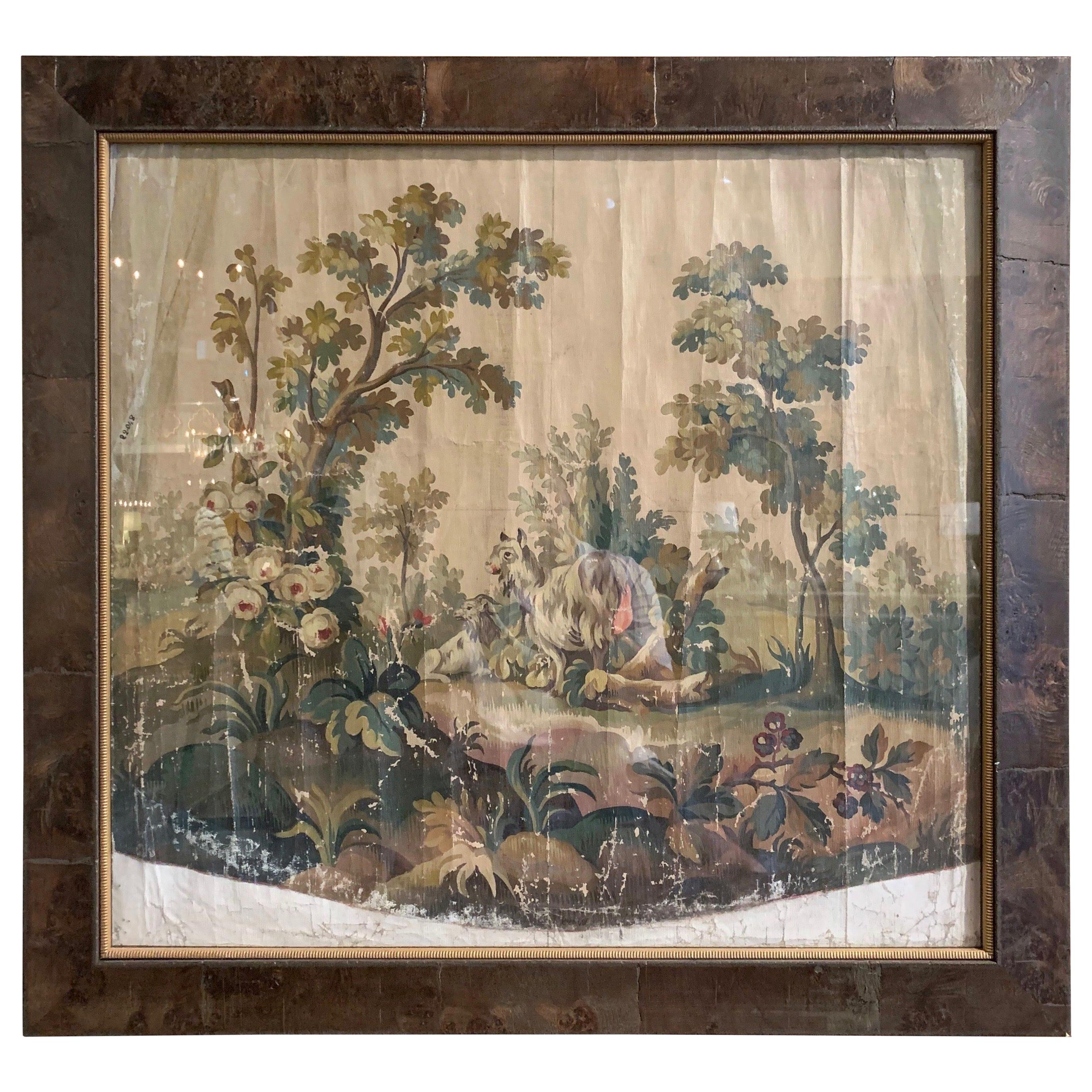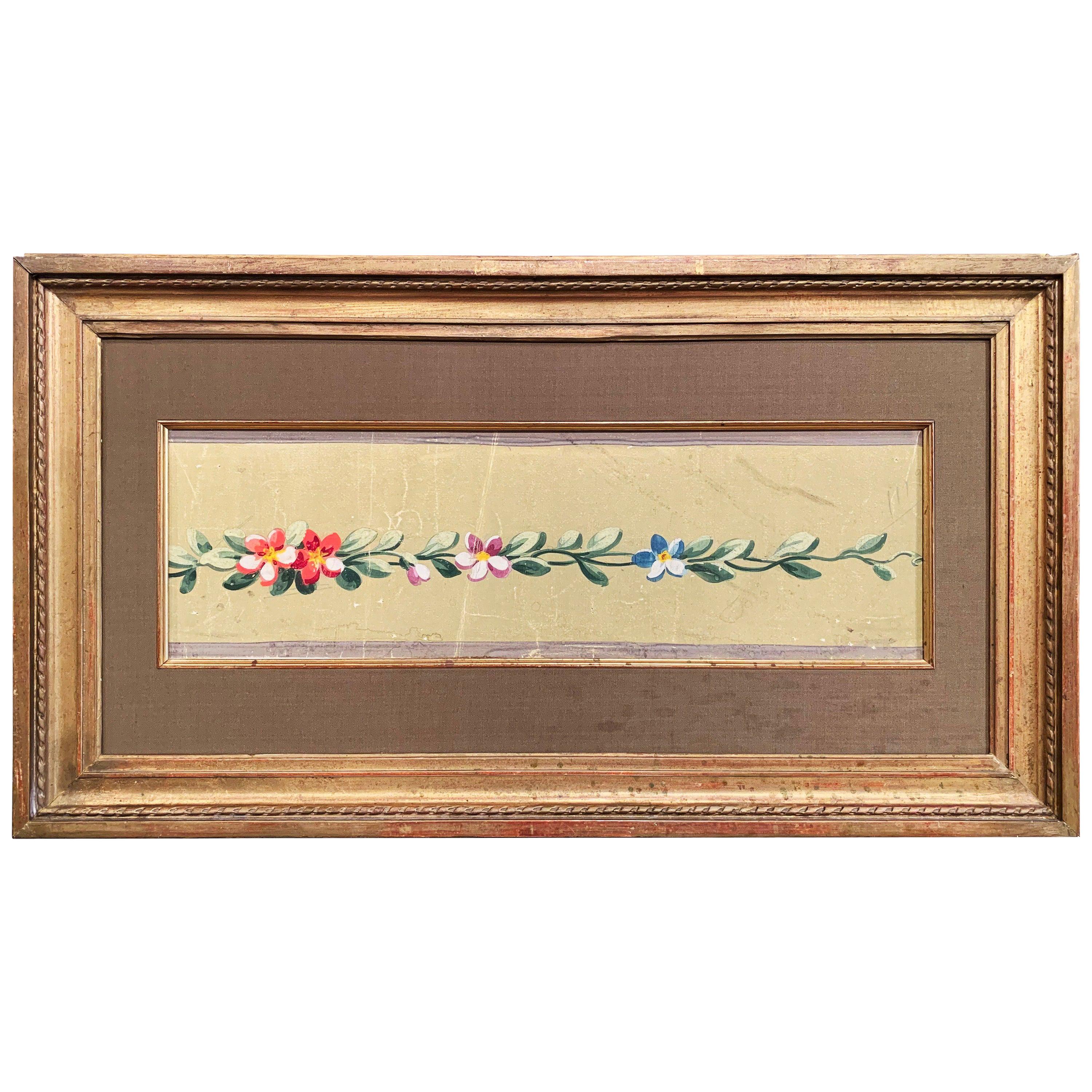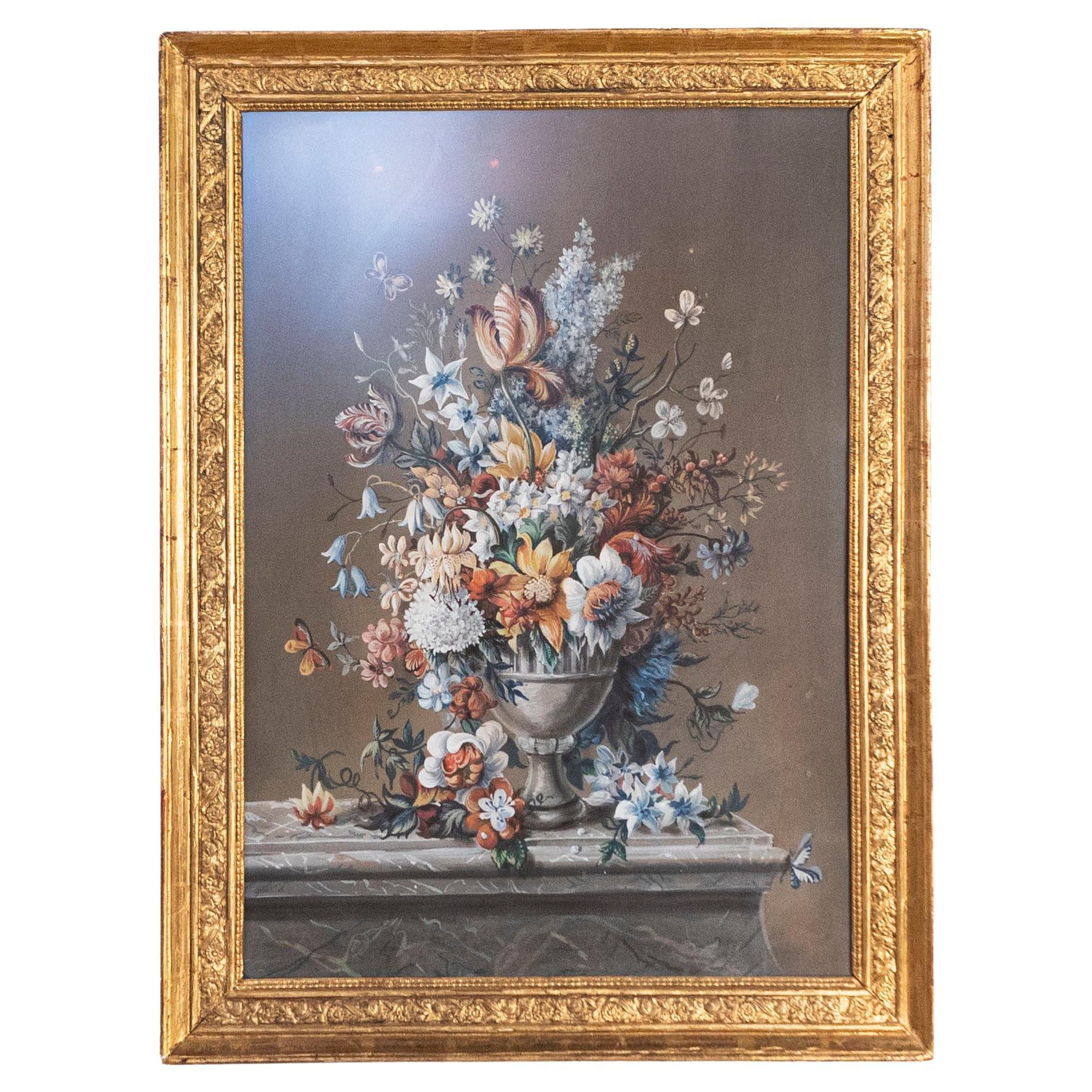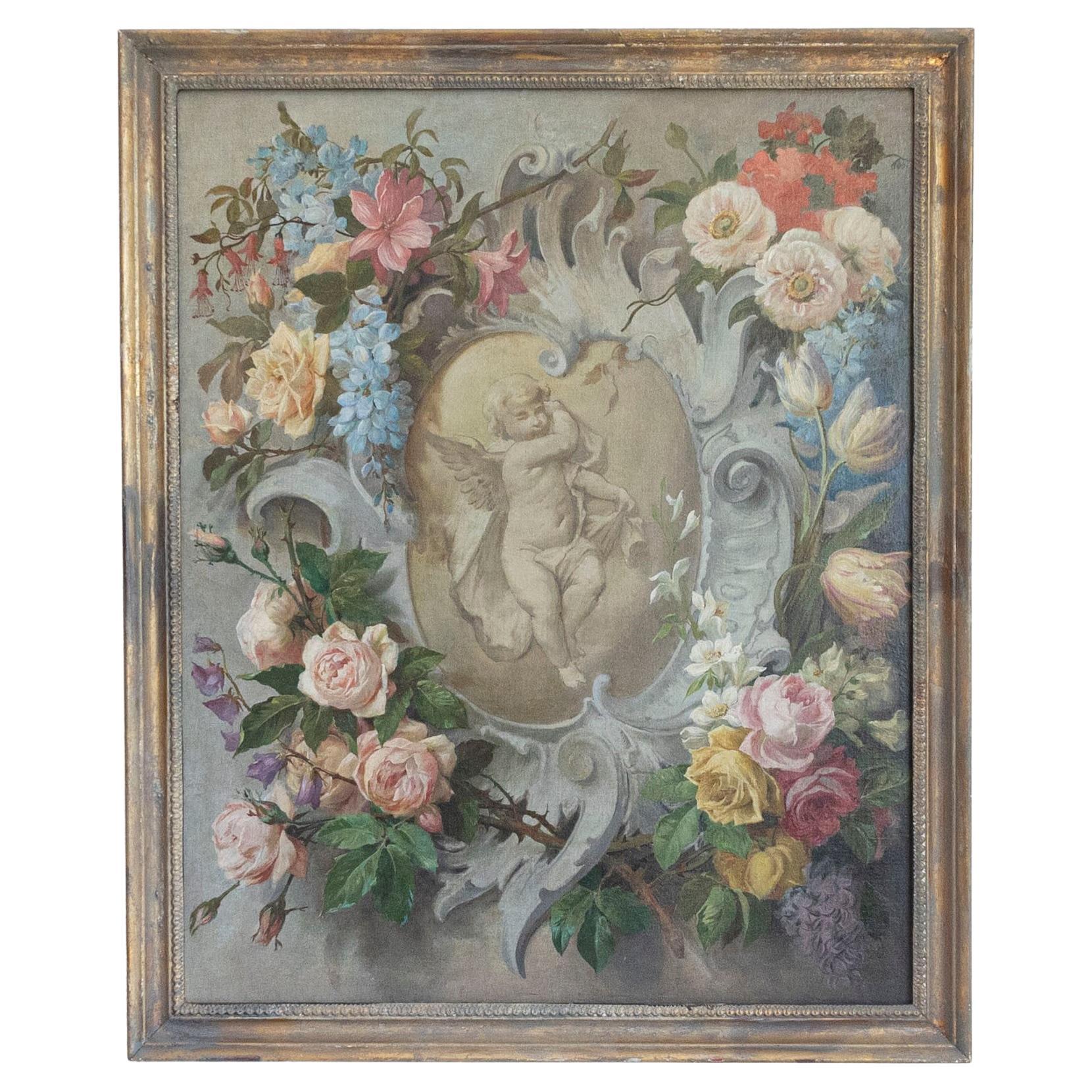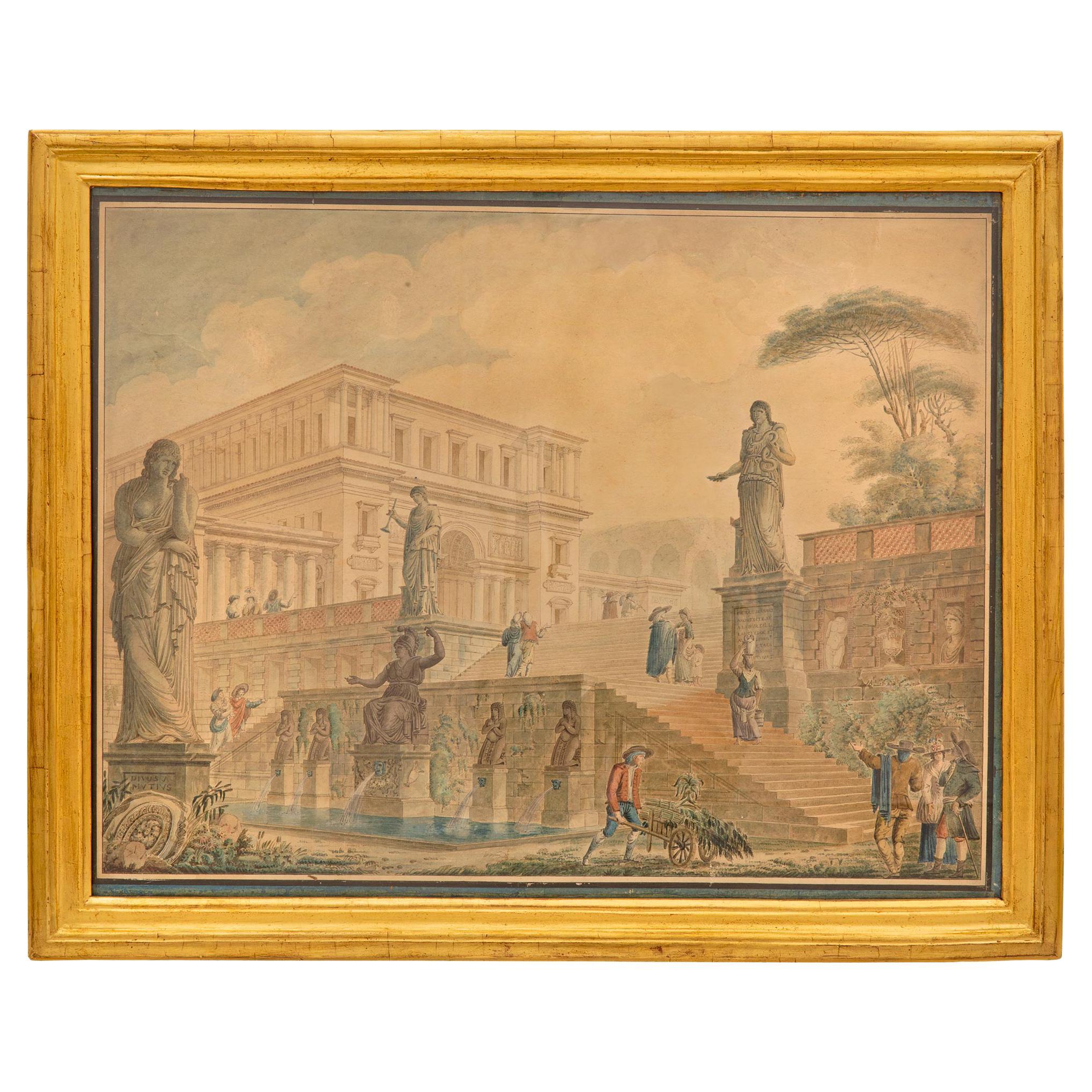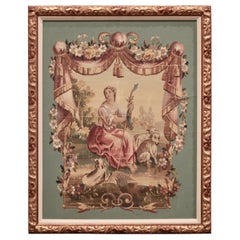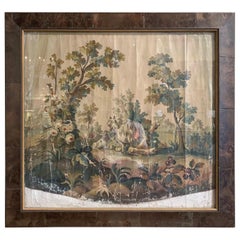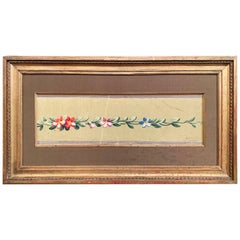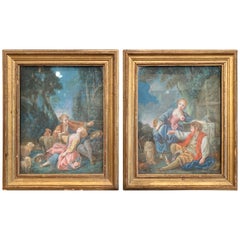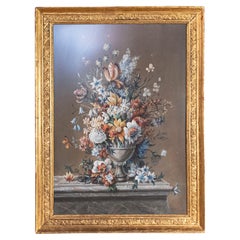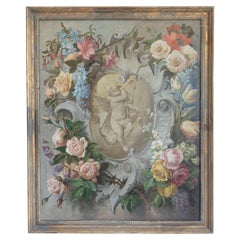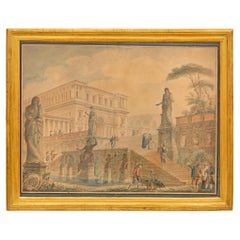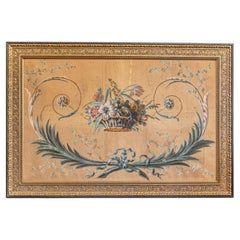Items Similar to 18th Century French Aubusson Cartoon Gouache on Paper in Gilt Frame with Glass
Want more images or videos?
Request additional images or videos from the seller
1 of 9
18th Century French Aubusson Cartoon Gouache on Paper in Gilt Frame with Glass
$2,600
£1,929.30
€2,247.37
CA$3,619.22
A$4,030.33
CHF 2,097.56
MX$49,693.44
NOK 26,714.06
SEK 25,108.63
DKK 16,768.18
Shipping
Retrieving quote...The 1stDibs Promise:
Authenticity Guarantee,
Money-Back Guarantee,
24-Hour Cancellation
About the Item
Decorate a living room wall or study with this elegant and colorful, antique Aubusson drawing cartoon. Created in the city of Aubusson, France circa 1760 and is set in a gilt frame, the gouache on paper features an hand painted courting scene set in an oval medallion and embellished with a floral and leaf border. The wall hanging painting is further protected with glass; it is in excellent condition commensurate with age and use, and adorns rich, vibrant colors in a pale green, yellow and pink palette.
Tapestry cartoons are the life-size models from which tapestries are woven. Painted in oil on canvas or gouache on paper, these paintings gave life to the smallest cushion to the largest of wall hangings. The wool and silks were dyed to match the painting, and the weaver then copied it. Working with the cartoon under the warp threads of the loom, at a rate of approximately two square meters per month, per worker, the final tapestry slowly appeared. The quality of the finished tapestry was largely dependent on the artistry of the cartoon painter combined with the skill of the weaver.
The earliest cartoon painters were usually local artists designing for the local manufacturers. Cartoons could be simple full size line drawings, where the artistry of the weaver was left to fill in the colors, or full size, full color paintings, where the weaver copied exactly what was before him. Often different painters specialized in landscapes, flowers, animals or figurative subjects. Several painters could have been employed on a single cartoon. The cartoon painter's job was to create a cartoon, from what might have been a great painting, for the weavers to work on. However, a famous painting might be entrusted to a master weaver.
The earliest center for the weaving of tapestries in France, can be traced back to 1457 in a small town situated on the banks of the river Creuse, Aubusson is now associated the world over for its tapestries.
In 1665 Louis XIV gave the title "Manufacture Royale d'Aubusson" to the various manufacturers working in the town of Aubusson.
Measures: 46" W x 24.5" H.
- Creator:Aubusson Manufacture (Manufacturer)
- Dimensions:Height: 24.5 in (62.23 cm)Width: 46 in (116.84 cm)Depth: 1.5 in (3.81 cm)
- Style:Louis XVI (In the Style Of)
- Materials and Techniques:
- Place of Origin:
- Period:
- Date of Manufacture:circa 1760
- Condition:Wear consistent with age and use.
- Seller Location:Dallas, TX
- Reference Number:Seller: 43-3801stDibs: LU951220062532
About the Seller
5.0
Platinum Seller
Premium sellers with a 4.7+ rating and 24-hour response times
Established in 1986
1stDibs seller since 2012
2,713 sales on 1stDibs
Typical response time: <1 hour
- ShippingRetrieving quote...Shipping from: Dallas, TX
- Return Policy
Authenticity Guarantee
In the unlikely event there’s an issue with an item’s authenticity, contact us within 1 year for a full refund. DetailsMoney-Back Guarantee
If your item is not as described, is damaged in transit, or does not arrive, contact us within 7 days for a full refund. Details24-Hour Cancellation
You have a 24-hour grace period in which to reconsider your purchase, with no questions asked.Vetted Professional Sellers
Our world-class sellers must adhere to strict standards for service and quality, maintaining the integrity of our listings.Price-Match Guarantee
If you find that a seller listed the same item for a lower price elsewhere, we’ll match it.Trusted Global Delivery
Our best-in-class carrier network provides specialized shipping options worldwide, including custom delivery.More From This Seller
View All19th Century French Aubusson Tapestry Gouache on Paper in Carved Gilt Frame
By Aubusson Manufacture
Located in Dallas, TX
Decorate a bedroom wall with this colorful, antique Aubusson drawing cartoon. Created in the city of Aubusson, France circa 1820 and set in a carved gilt frame, the simple and elegan...
Category
Antique Early 19th Century French Louis XVI Drawings
Materials
Giltwood, Paper
18th Century French Aubusson Tapestry Gouache on Paper with Frame and Glass
By Aubusson Manufacture
Located in Dallas, TX
Decorate a wall with this colorful, antique Aubusson drawing cartoon. Created in the city of Aubusson, France circa 1780 and set in a carved frame with gilt trim and protected with g...
Category
Antique Late 18th Century French Louis XVI Drawings
Materials
Giltwood, Paper
19th Century French Aubusson Floral Tapestry Gouache on Paper in Gilt Frame
By Aubusson Manufacture
Located in Dallas, TX
Decorate a bedroom wall with this colorful, antique Aubusson drawing cartoon. Created in the city of Aubusson, France circa 1820, the simple and elegant gouache on paper is hand pain...
Category
Antique Early 19th Century French Louis XVI Drawings
Materials
Giltwood, Paper
Pair of 18th Century Louis XVI Watercolors in Original Giltwood Frames
Located in Dallas, TX
These antique colorful watercolors were crafted in France circa 1780, set in the original giltwood frames with glass protection, each art work depicts a courting scene with a young g...
Category
Antique Late 18th Century French Louis XVI Paintings
Materials
Glass, Giltwood, Paper
Pair of 19th Century French Signed Chromo Lithographs in Gilt Frames
Located in Dallas, TX
These elegant antique chromo lithographs were created in Normandy circa 1880. Set in a carved gilt frame from later addition, each artwork depicts joyful children at play; both scene...
Category
Antique Late 19th Century French Paintings
Materials
Giltwood, Paper
19th Century French Neoclassical "Grisaille" Painting on Paper in Giltwood Frame
Located in Dallas, TX
Decorate a wall with this elegant antique painting. Hand painted in France circa 1820, and set in a gilt wood frame protected with glass, the artwork features two classical women fi...
Category
Antique Early 19th Century French Neoclassical Drawings
Materials
Glass, Giltwood, Paper
You May Also Like
French Empire Period Pastel and Gouache Painting, circa 1810 in Giltwood Frame
Located in Atlanta, GA
A French Empire period floral pastel and gouache painting from the early 19th century, in giltwood frame. This French painting features an exquisite depiction of a bouquet of flowers set inside a metal vase, adorned in its upper section with what could be waterleaves. It is the exuberant bouquet that attracts all of our attention, with its variety of flowers and abundance of colors. The pastel technique...
Category
Antique Early 19th Century French Empire Paintings
Materials
Giltwood, Paint
French 19th Century Aubusson Cartoon with Floral Decor Surrounding a Cherub
By Royal Manufacture of Aubusson
Located in Atlanta, GA
A French Aubusson cartoon painting from the 19th century, with floral decor surrounding a cherub populated cartouche. Created to be used as a model to weave a tapestry in the Aubusso...
Category
Antique 19th Century French Paintings
Materials
Canvas, Wood, Paint
Italian 18th Century Louis XVI Period Gouache in Its Original Giltwood Frame
Located in West Palm Beach, FL
A beautiful Italian 18th century Louis XVI period Gouache in its original giltwood frame. The wonderfully executed painting depicts a stunning Italian structure with grand stairs lea...
Category
Antique 18th Century Italian Louis XVI Paintings
Materials
Canvas, Giltwood
French Directoire Period Floral Painted Panel in Gilded Frame, circa 1790
Located in Atlanta, GA
A French Directoire period framed painted panel from the late 18th century, with floral motifs. Born in France during the later years of the 18th century, this exquisite decorative p...
Category
Antique Late 18th Century French Directoire Decorative Art
Materials
Wood, Paint
Italian 18th Century Louis XVI Period Gouache in its Original Giltwood Frame
Located in West Palm Beach, FL
A charming Italian 18th century Louis XVI period gouache in its original giltwood frame. The wonderfully executed painting depicts a beautiful landscape of the Italian countryside wi...
Category
Antique 18th Century Italian Louis XVI Paintings
Materials
Canvas, Giltwood
French Aubusson Painting Framed with an 18th Century French Fragment
By Interi
Located in Dublin, Dalkey
18th century French Aubusson floral painting framed with an 18th century French fragment.
The oil painting original comes from France and is painted with a Aubusson-tapestry floral ...
Category
Antique 18th Century French Aubusson Paintings
Materials
Canvas, Wood, Paint
